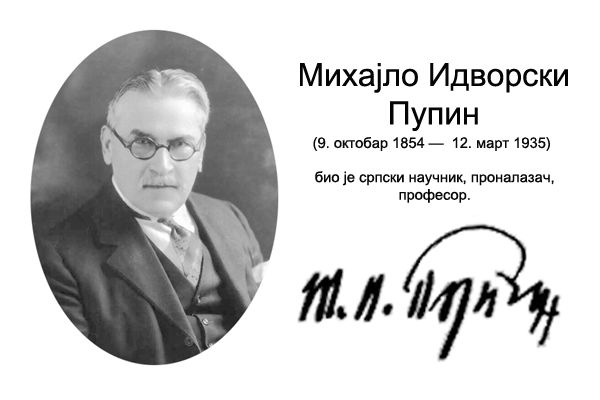Mihajlo Pupin
Mihajlo Pupin was a renowned Serbian physicist, physical chemist and philanthropist..
He was born on 4 October 1858 in the village of Idvor, in the region of Banat. Pupin’s family was of Serbian origin, and his parents, who were illiterate, encouraged his education. He always remembered the words of his mother and cited her in his autobiography:
The task of the school is to educate young people i.e. the students of King Alexander I's all-boys grammar school in Belgrade and provide them with an excellent all-round education, applying the best teaching methods and developing a healthy and strong Yugoslav national sentiment in them
Pupin immigrated to the United States in 1874 and held a series of odd jobs before attending Columbia College (now Columbia University), where he earned a B.A. in 1883; that year he also became a U.S. citizen. Pupin subsequently studied at the University of Cambridge and the University of Berlin (Ph.D., 1889). In 1889 he began teaching mathematical physics at Columbia, becoming professor emeritus in 1931. Pupin is best known for devising a means of greatly extending the range of long-distance telephone communication by placing loading coils (of wire) at predetermined intervals along the transmitting wire.
In 1896 Pupin discovered that atoms struck by X-rays emit secondary X-ray radiation. He also invented a means for taking short-exposure X-ray photographs. In 1901 American Telephone and Telegraph Co. and some German telephone interests acquired the patent for his invention of long-distance telephony. Pupin received the 1924 Pulitzer Prize in biography for his autobiographical work From Immigrant to Inventor.
Pupin died in New York City in 1935 at age 76.
